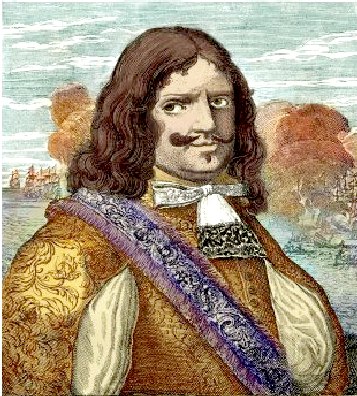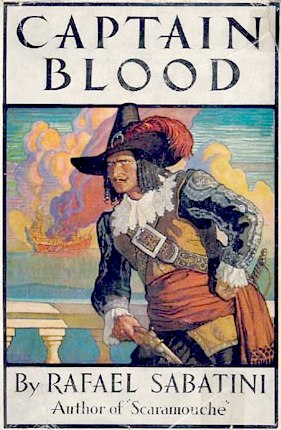|
CAPTAIN SIR HENRY MORGAN
Please use our A-Z INDEX to navigate this site, or see HOME
|
|
Sir Henry Morgan
Captain Henry Morgan was a privateer in the Buccaneering era knighted by King Charles II of England. The colorful background of Sir Henry inspired many fellow pirates and privateers to emulate his profiteering from less fortunate hauliers of marine cargo. Where, before he was affiliated with the British Crown against other nations, it is thought that he must have buried his loot in traditional pirate fashion. Given that there were no banking facilities for hoards of treasure, and that paper promises on notes are worthless when called on - and rot in damp conditions. Not forgetting the demon inflation, when money devalues, whereas gold and diamonds consistently out perform the stock markets. A gold standard that governments soon abandoned, preferring to print as much money as they wanted, even though they could not foot the bill; leading to staggering national debts.
One pirate who he appears to have inspired is Edward Teach, who was just a boy when the infamous Captain Morgan passed away, leaving a gap in the market so to speak. Edward Teach grew an enormous black beard, and used the pirate code of the day to secrete treasure on islands known only to pirates at the time. Since they chose those that were largely uncharted and barren. Pirates knew this land mass as Skeleton Island. But only a very few knew where it was. Captain Morgan was one of the few. He took his code with him to the grave, literally.
In those days, Caribbean islands, under the control of the British government, depended largely on the privateers for the collection of revenue. Thus, in reality, privateers were government-sponsored individuals. They raised their fleet of ships using government money. These privateers regularly attacked Spanish colonies located in and around the Pacific Ocean and plunder their wealth. The respective governing authority of the islands issued a license called a letter of marque to these privateers. This license authorized the privateers to attack and snatch the ships belonging to some specific country. In return, the privateers gave a substantial portion of the loot to the license issuing authority.
Sir Henry
Morgan (c. 1635 – 25 August 1688) later became a plantation owner, Lieutenant Governor of Jamaica. From his base in
Port Royal, Jamaica, he raided settlements and shipping on the Spanish Main, becoming wealthy as he did so. With the prize money from the raids he purchased three large sugar plantations on the island.
Morgan raided Spanish colonies of Trujillo, Granada, and Vildemos during the late 1663 and early 1664. He along with fellow captain Jacob Fackman and John Morris came back to Port Royal, Jamaica with shiploads of valuables. During 1664, the relation between the English and the Dutch worsened. As a result, the British colonial government of the Caribbean’s started issuing letters of marque against the Dutch. The Second Anglo-Dutch war took place between 1665 and 1667. Morgan led the invasion of Dutch colonies of the Caribbean’s as second in command during this period.
When diplomatic relations between the Kingdom of England and Spain worsened in 1667, Modyford gave Morgan a letter of marque, a licence to attack and seize Spanish vessels. Morgan subsequently conducted successful and highly lucrative raids on Puerto Principe (now Camagüey in modern Cuba) and Porto Bello (now Portobelo in modern Panama). In 1668 he sailed for Maracaibo and Gibraltar, both on Lake Maracaibo in modern-day Venezuela. He raided both cities and stripped them of their wealth before destroying a large Spanish squadron as he escaped.
A memoir published by Alexandre Exquemelin, a former shipmate of Morgan's, accused the privateer of widespread torture and other offences; Morgan brought a libel suit against the book's English publishers and won, although the black picture Exquemelin portrayed of Morgan has affected history's view of the Welshman.
He died in Jamaica on 25 August 1688. His life was romanticised after his death and he became the inspiration for pirate-themed works of fiction across a range of genres.
Port Royal was the subject of an earthquake and tsunami. The sinful city was sunk beneath the waves, along with the privateer's grave. His buried treasure was never recovered from the island.
This is the inspiration for a John Storm ocean awareness adventure, featuring the Elizabeth Swann, an artificially intelligent ship, powered by renewable energy.
Please use our A-Z INDEX to navigate this site
|
|
|
This website is Copyright © 2025 Cleaner Ocean Foundation
|

